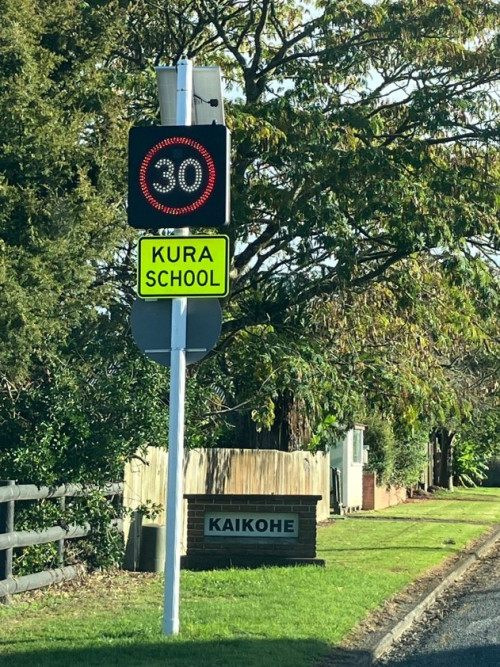Variable speed limits (VSLs) are used to manage travel speeds to protect people using the roads at certain times. VSLs are used around schools and at high-risk intersections throughout New Zealand and are legally enforceable.
When operating, the VSL will appear on a flashing electronic sign. If the sign is not turned on, the permanent speed limit applies.

A variable speed limit helps protect young New Zealanders during busier times (such as during pickup and drop-off) and allows people to travel at an appropriate speed when there’s minimal student activity (for example, nights, weekends and during the school holidays).
The use of intersection speed zones helps to protect people turning from and into side roads from busy main roads. They detect when a driver is approaching on a side road and activates a variable speed limit sign to temporarily show a lower speed limit of the main road.
When driving, if you approach an intersection speed zone and the speed changes, you must slow down to the speed limit shown through the intersection and travel at this speed until you pass another speed limit sign.
As most rural intersection crashes involve turning and crossing vehicles colliding with high-speed traffic continuing through the road, we’re using intersection speed zones to reduce the number and severity of crashes.